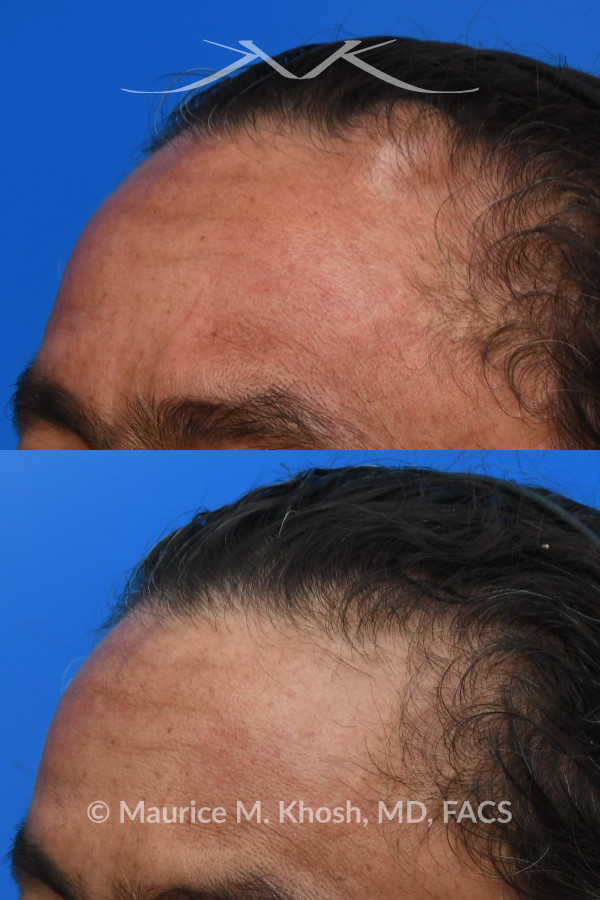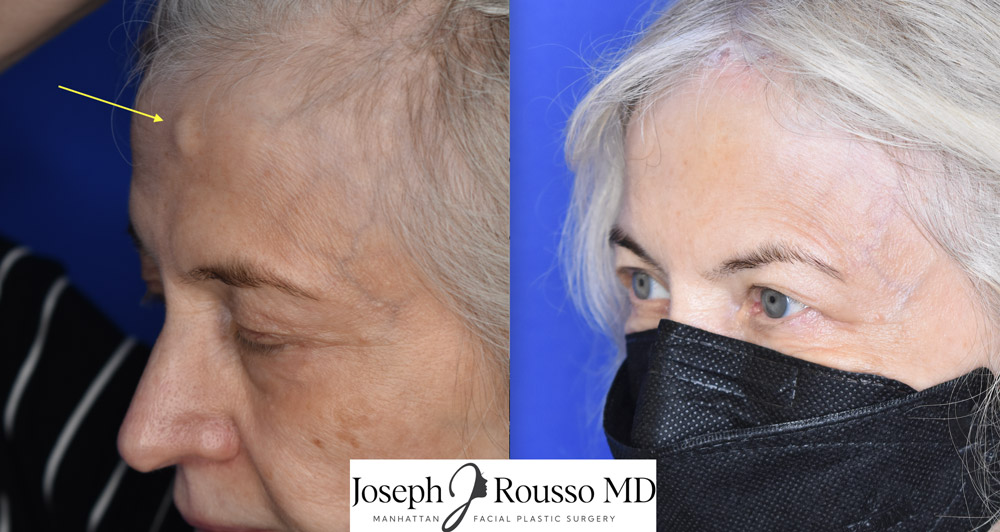An osteoma is a benign bone tumor. These growths are typically slow-developing and asymptomatic.
Osteomas are commonly diagnosed through incidental findings on X-rays or other imaging tests. They may arise in any bone, often affecting the skull and facial bones. While the exact cause of osteomas remains unclear, they can sometimes be associated with genetic conditions, such as Gardner’s syndrome.
Although generally non-cancerous, in rare instances, osteomas can cause discomfort or complications by interfering with normal function or aesthetic appearance, prompting individuals to seek treatment. Treatment options vary based on size, location, and any symptoms caused by the tumor, ranging from regular monitoring to surgical removal. Awareness of osteomas is crucial for early detection and management of these benign bone lesions.
Introduction To Osteoma
Osteomas are not just benign growths; they are a curiosity in the medical world. These bone tumors are mostly harmless, but their presence can raise questions and sometimes require attention. This section delves into the essence of osteomas, explores who typically might develop them, and uncovers their various forms.
Defining Osteoma: An Overview
A simple definition of osteoma points to a kind of noncancerous bone tumor. It typically forms on the skull and facial bones. Despite its tumor status, it’s often slow-growing and doesn’t spread to other parts of the body. These bone masses are notorious for being asymptomatic, which means they may not cause any noticeable signs or symptoms. When identification is necessary, it’s usually achieved through routine X-rays or other imaging techniques.
Epidemiology And Demographics
- Osteomas can develop in any age group.
- They are slightly more common in adults though.
- The prevalence does not vary significantly between genders, but some studies indicate a slight male dominance.
Types Of Osteoma: Compact, Spongy, And Subperiosteal
Osteomas come in different types:
- Compact Osteomas consist of dense bone tissue. They are often found on the outer surface of the skull bones.
- Spongy Osteomas, also called cancellous osteomas, consist of more porous bone. They are usually located in the inner regions of the bone.
- Subperiosteal Osteomas develop under the periosteum, the tissue layer covering the bones. These are rarer than the other types.

Credit: www.facedoctornyc.com
Etiology And Pathophysiology
Osteomas are bone tumors, often benign in nature. This condition can manifest on the surface of bones, particularly in the skull and facial bones. Understanding the cause and development of osteoma aids in early diagnosis and effective treatment. Here, we will explore the etiology, which refers to the cause or origin, and pathophysiology, the study of how the disease develops, of osteoma.
Genetic And Molecular Basis Of Osteoma
Osteomas may have a genetic link, with mutations in certain genes influencing their development. Scientists have discovered associations between gene mutations and the occurrence of these bone growths. Key genes involved include:
- Gardner syndrome-associated genes
- Mutations in bone development pathways
Environmental And Lifestyle Factors
While genetic predisposition plays a role, environmental factors can contribute to osteoma development. Notable factors include:
- Trauma to bone sites
- Chronic inflammatory conditions
Lifestyle choices such as diet and activity level might influence the risk, though research is ongoing.
Pathological Progression Of Osteoma Formation
The life cycle of osteoma starts long before it’s detectable. The formation process includes:
- Initiation of abnormal bone growth
- Osteoid material accumulation
- Hardening into compact bone
This progression results in a noticeable mass, leading to diagnosis. Understanding this process is vital for treatment approaches.
Clinical Manifestations
Understanding the signs of osteoma fosters timely diagnosis and treatment. This benign bone tumor may go unnoticed or present various symptoms, depending on its size and location.
Symptoms Associated With Osteoma
Symptoms of osteoma can vary widely. Some individuals may experience no symptoms at all. For others, the following may be observed:
- Painless bump on the bone surface
- Headaches if growth is near sinuses or forehead
- Visual disturbances in case of orbital involvement
- Sinus congestion
Osteoma And Its Effects On Surrounding Tissues
Osteomas are bony growths that remain mostly harmless. Still, they can impact nearby tissues:
- Displacement of surrounding tissue
- Obstruction of sinus passages
- Pressure effects on nerves, causing pain
Complications Arising From Osteoma
Complications are rare but relevant in osteoma cases:
| Complication | Consequence |
|---|---|
| Osteoma growth in critical areas | Functional impairment or cosmetic concerns |
| Increased size of osteoma | Risk of pain and inflammation |
| Interference with organ function | Possible surgery requirement |

Credit: facialplasticsurgery-nyc.com
Diagnostic Procedures
Doctors use special tests to find out if a patient has osteoma. These tests help them see the bone growths and understand what they look like.
Use Of Imaging Techniques In Diagnosing Osteoma
Images of bones are very helpful for looking at osteomas. Different machines take these pictures.
- X-rays show the shape of the osteoma.
- CT scans provide a clear picture and show the size.
- MRI helps to see if the osteoma has affected other tissues.
Biopsy And Histological Examination
A biopsy is when doctors take a tiny piece of the osteoma to study. This tells them what cells are inside.
- They look at the cells under a microscope.
- The test helps to make sure the bone growth is an osteoma.
Differential Diagnosis: Distinguishing Osteoma From Other Pathologies
Osteomas need to be told apart from other bone problems. Doctors look at their traits to do this.
| Osteoma | Other Bone Problems |
|---|---|
| Has a smooth surface | May be rough or bumpy |
| Often found in head bones | Can occur in any bone |
| Does not grow fast | May grow quickly |
Treatment Options For Osteoma
Exploring treatment options for osteoma is key to understanding how to manage this bone condition effectively. Osteomas are benign bone tumors, typically requiring intervention based on size, location, and symptoms. Let’s delve into the diverse treatment methods ranging from surgical interventions to non-surgical management and the latest advances in therapy.
Surgical Interventions And Techniques
Surgery is a common method to treat sizable or symptomatic osteomas. Listed below are various surgical techniques:
- Excision: Complete removal of the tumor.
- Shaving: Reducing the size of the tumor when complete removal isn’t necessary.
- Endoscopic Surgery: A minimally invasive procedure that uses an endoscope to remove tumors, especially in the sinuses.
Choosing the right surgical method depends on the osteoma’s location and impact on surrounding tissues.
Non-surgical Management Of Osteoma
For small, asymptomatic osteomas, observation might be the chosen path. Medication can help manage symptoms such as pain. Active monitoring involves regular medical check-ups to track the tumor’s growth and any emerging symptoms.
Recent Advances In Osteoma Therapy
Research into osteoma treatment continuously evolves. New therapies aim to provide less invasive options. Radiofrequency ablation is one such technique being studied for its effectiveness in treating osteomas with minimal recovery time.
Prognosis And Outcomes
Understanding the prognosis and outcomes for Osteoma helps patients and families set realistic expectations. This benign bone growth is usually not life-threatening. Yet, its impact varies from person to person. With proper care, individuals can manage this condition effectively. Let’s explore what patients might anticipate regarding the progression and management of Osteoma.
Expected Course Of The Disease
Osteomas develop slowly and generally don’t change much once they’re noticed. In many cases, these bone tumors aren’t found until an X-ray is done for another reason. Most Osteomas do not grow back if removed.
Factors Affecting Prognosis
- Location and size of the tumor
- Presence of symptoms or complications
- Patient’s overall health
Smaller Osteomas without symptoms may not need treatment. Larger ones causing discomfort or functional issues might need surgical removal.
Long-term Management And Surveillance
Regular check-ups are vital to monitor growth. A non-invasive management approach is ideal for many patients. It includes:
- Observation with routine imaging for changes
- Medication if pain arises
Surgical removal is considered if Osteomas cause significant symptoms. Proper follow-up care post-surgery ensures the best outcome and minimizes recurrence chances.

Credit: journalretinavitreous.biomedcentral.com
Conclusion
Navigating the complexities of osteoma can be challenging. It is essential to stay informed and proactive with your bone health. Remember, early detection through regular check-ups plays a pivotal role in managing this condition effectively. For further guidance, always consult your healthcare provider.
Stay vigilant for a stronger, healthier you.

